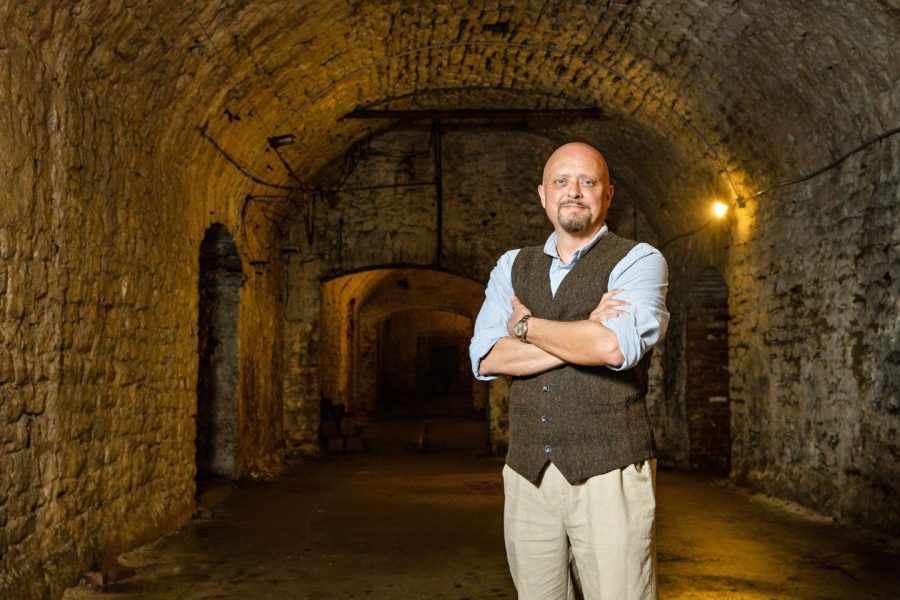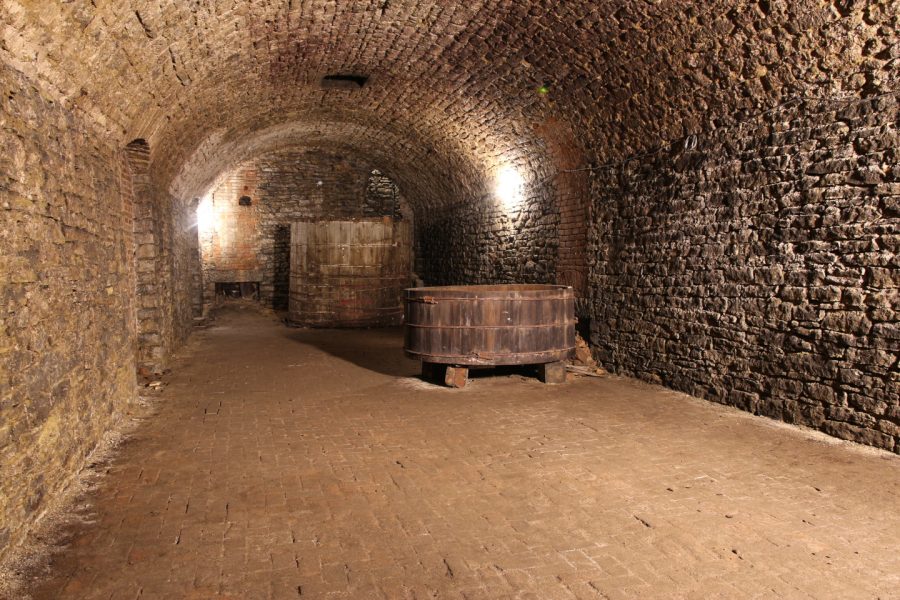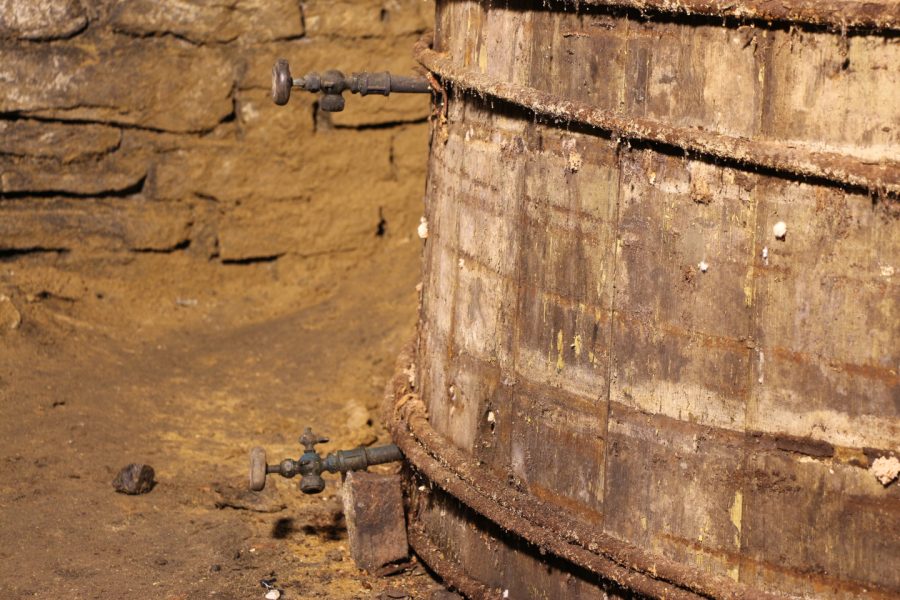
By Michael D. Morgan
Missing Linck Yeast was discovered clinging to life in a pre-prohibition fermenting vat, found in the lost lagering cellars of the 19th century Linck Brewery (Cincinnati, Ohio). It should have been dead. But instead, it was rescued, cultivated, propagated, and unleashed in the 21st century. Now, through the Missing Linck Festival and Competition, the bravest brewers are each reintroducing the Missing Linck to the modern world with their own inspiration. Styles are broad, the freak is on, and the Missing Linck reawakens in every pour.
In the 19th century, Cincinnati, Ohio, was one of the most prolific brewing centers in the United States. Roughly a dozen breweries were concentrated in Over-the-Rhine, a neighborhood adjacent to the city’s central business district. Today, Over-the-Rhine is a trendy historic area in the throes of an aggressive renaissance, but that’s a relatively recent development.
The neighborhood declined steeply during Prohibition, becoming the city’s most neglected and troubled area from the Great Depression through the 2000s. As a result, many of the vast, stone-vaulted lagering cellars from the mid-19th century were sealed off and forgotten during that period. Now, Cincinnatians sometimes find thousands of square feet of sub-basement lagering cellars beyond obstructed passageways. It doesn’t happen often, but it happens enough not to surprise anybody anymore. But then, something unprecedented happened in 2016.
One rediscovered cellar contained an intact, wood, pre-Prohibition fermenting vat.

The Origins of the Missing Linck Yeast & Festival
This Missing Linck Festival and its Missing Ingredient Homebrew Competition started with a beer-fueled conversation between Bret Kollman Baker and Michael D. Morgan, organizers of the festival and cohosts of the Brew Skies Hoppy Hour Podcast. Kollman Baker is Chief Operating Officer and Brewmaster at Urban Artifact (Cincinnati, OH), and Morgan is President of Queen City History & Education.
Commenting on the discovery of lagering cellars in Cincinnati, Morgan asked Kollmann Baker, “Is it possible for yeast to survive being sealed off in a dank sub-basement for around 80 years?” Kollmann Baker mulled it over and answered with trademark optimism: “Probably not.”
However, the idea stuck around, and in 2017 brewers from Urban Artifact descended into the 1850s lagering cellar of the F. & J.A. Linck Brewery, where they took multiple swabs of the surface of the fermenter, its spigots and chips of wood from the interior surface. Every swab was placed in a jar of wort. Six months later, every jar that showed signs of fermentation, hadn’t turned a color that looked like a trip to the hospital, and didn’t smell like a tire fire or a soiled baby diaper was all laboriously sampled.
Three of them were good enough to send off for DNA testing, and one of these turned out to be a viable saccharomyces cerevisiae – a reclaimed ale yeast!


Brewing with Missing Linck Yeast
Urban Artifact brewed the first modern beer with the discovered yeast in 2019, naming it Missing Linck in combined honor of the Linck brothers, who had built the lagering cellar where the yeast was found, along with the random improbability of discovering it. In 2020, Kollmann Baker and Morgan planned the first Missing Linck Festival, where commercial and hobby brewers create beers with the yeast. Unfortunately, a much less welcome biological discovery took over the world in 2020, and plans were sidelined until the first Missing Linck Fest occurred in 2022.
It’s now an annual festival occurring on the first Saturday in June. Regional and national craft brewers are invited to use Missing Linck Yeast to brew a creative range of styles. Missing Linck Yeast produces complex, nuanced, and flavorful beers, allowing skilled brewers to display their talents.
Every brewery that participates in Missing Linck, from the all-sour Urban Artifact to local start-ups like Humble Monk Brewing (Cincinnati, OH), to national brewers like Sam Adams (Boston, MA / Cincinnati, OH), all produce fantastic beers, and some participants bring a very specialized approach to their craft. For example, Carillon Brewing Co. (Dayton, OH), brews in a replicated 1850s brewhouse, and MobCraft (Milwaukee, WI / Denver, CO) is coming with two beers, one made with Missing Linck Yeast and one made with a lager yeast that they found in the 1870 fermenting cellars of Milwaukee’s defunct Falk Brewing Co. following essentially the same process that led to Urban Artifact’s discovery of Missing Linck Yeast.
Missing Linck Homebrew Competition
The Missing Ingredient Homebrew Competition is the homebrew side of the event, also now in its second year and growing rapidly. Like commercial brewers, homebrewers are only asked to follow one basic rule: use Missing Linck Yeast. Roxanne Westendorf, a member of the Brewers Association Board of Directors, the American Homebrewers Association Governing Committee, and a past president of the Bloatarian Brewing League homebrew club takes the leadership reigns of the competition with her fellow Bloatarians. Roxanne is a Beer Judge Certification Program (BJCP) certified judge, but she embraces the competition’s decidedly independent, un-BJCP protocols.
Bret Kollmann Baker explains, “We want to judge homebrewers the same way that commercial brewers are judged: do I like this beer? Because in the real world, that’s all that matters. We’ve won national awards for beers that we stopped making–beers that I loved–for the simple reason that no matter how good they were, the public didn’t buy them.” Rather than being judged by style paremeters and technical concerns, Missing Ingredient Homebrew Competition winners emerge from a round of tastings based on “pure hedonism.”
Despite a deep appreciation for traditional judging, Westendorf loves “the excitement of something different” in Missing Ingredient. She sees the competition as a “very different way of collaborating between brewers and homebrewers.” Although they usually smile and nod politely, most commercial brewers hate getting suggestions from homebrewers on improving their craft because conditions and challenges are different in a brewery than in a garage. These distinctions are, however, decreased in Missing Linck and Missing Ingredient. Part of the fun of both is that the yeast is complex, and its continued attenuation in aging keeps radically changing flavors over time. As a result, several brewers that participated last year are aging their 2023 beers months in advance. That, however, is a luxury that not all commercial breweries can afford, nor are multiple batches with uncertain outcomes. This can flip the traditional roles of commercial versus homebrewers. In this instance, the ability of homebrewers to make numerous batches and age some of them for a year or more means that homebrewers get to pass on valuable information to their commercial cohorts. “It’s the challenge and the learning,” Westendorf says, the ability “to be part of bringing back history.”
This year’s Missing Ingredient Homebrew Competition will have more than 50 entries from the Greater Cincinnati and Dayton regions, Michigan, Wisconsin, Indiana, and Illinois. Work has already begun to expand distribution networks next year across the Midwest and beyond, with inquiries from Canada as well.
2023 Missing Linck Festival
This year’s Missing Linck Festival will occur on June 3, 2023, in the Northside neighborhood of Cincinnati. It starts at noon and goes until beer from fifteen participating breweries runs out. In addition to beers you cannot taste anywhere else in the world, Missing Linck features excellent live music and food, a beer and cheese tasting, a Sasquatch Calling Competition, and other tours, events, and attractions. Winners of Missing Ingredient are announced at the festival. Full details can be found at www.MissingLinck.com.
Michael D. Morgan is cohost of the Brew Skies Happy Hour podcast, president of Queen City History & Education, and cofounder of the Missing Linck Festival and the Missing Ingredient Competition.



Share Post